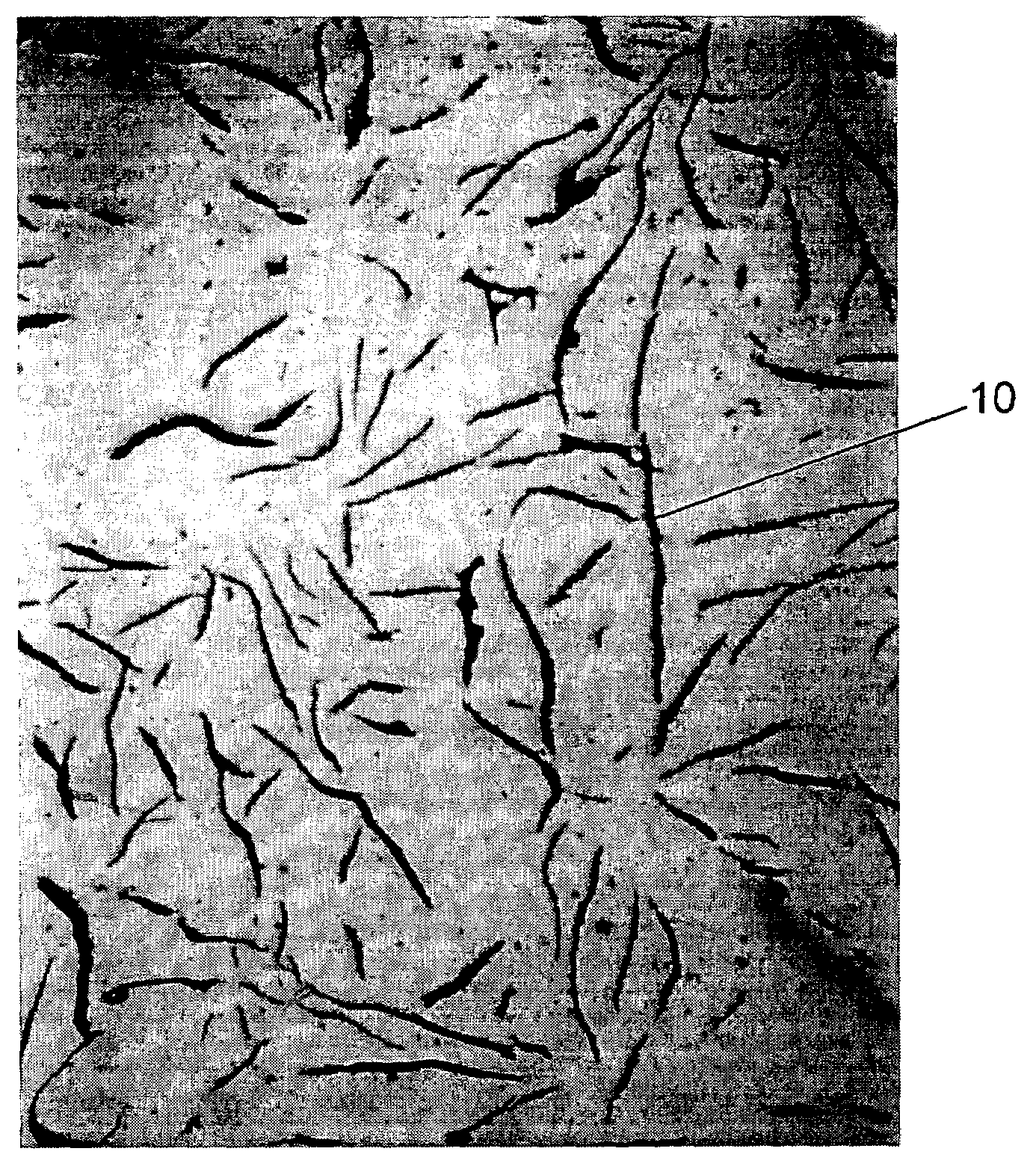High tensile strength gray iron alloy
a gray iron alloy, high tensile strength technology, applied in the direction of actuators, mechanical equipment, etc., can solve the problems of reducing the content of graphite, reducing the tensile strength of gray iron, and affecting the performance of steel alloys
- Summary
- Abstract
- Description
- Claims
- Application Information
AI Technical Summary
Benefits of technology
Problems solved by technology
Method used
Image
Examples
example 1
[0045]A gray iron alloy containing molybdenum and copper was prepared using conventional methods as described above, having the following chemical composition:
[0046]
IngredientAmount (% weight)Carbon3.58 + / − 0.05Manganese0.60 + / − 0.10Silicon1.75 + / − 0.15Phosphorous≦0.12Sulfur≦0.17Molybdenum0.70 + / − 0.10Copper0.40 + / − 0.10Chromium≦0.20
Magnesium was present in an amount less than about 0.001%. Other elements and impurities commonly found in cast iron were present in residual amounts. The alloy was cast in the form of a brake drum with a lightweight design, such as the design of the Gunite-Lite (Gunite Corp.—Rockford, Ill.) lightweight brake drum.
[0047]The durability of the brake drum was tested using a standard inertia dynamometer and air braking system as is well known in the art, in accordance with following procedure. Prior to testing, the brake drum was burnished to ensure at least 80% contact between the braking surface and the brake shoe. Burnishing was accomplished by repeated s...
example 2
[0063]Brake drums made of the inventive gray iron alloy containing molybdenum and copper were produced as described in Example 1, and were tested under simulated speed maintenance braking conditions at various downhill grades using an inertia dynamometer and air braking system as is well known in the art. As used herein, the term “speed maintenance braking” refers to braking operations where grade dependent brake pressure is applied to the brake to control the speed of a vehicle without stopping, such as may be required by travel over downhill grades.
[0064]Prior to testing, the brake drums were burnished to ensure at least 80% contact between the braking surface and the brake shoe, as described in Example 1. The brake drums were then subjected to a repeated sequence or cycle of speed maintenance braking applications at various simulated downhill grades until drum failure occurred as defined in Example 1. Each cycle of braking applications was performed as set forth below:[0065]A. 3 ...
example 3
[0072]Brake drums made of the inventive gray iron alloy containing molybdenum and copper were produced as described in Example 1, and were tested for resistance to heat checking under drag / static braking conditions using an inertia dynamometer and air braking system as is well known in the art. In contrast to the speed maintenance braking test of Example 2, the drag / static braking operations in the heat check test were designed to subject the brake drum to braking conditions which result in a repeated high-low temperature thermal cycling. As used herein, the term “heat check” refers to hairline cracks that develop in the braking surface parallel to the axis of the brake drum, resulting from thermal cycling stress as described above.
[0073]Prior to testing, the brake drums were burnished to ensure at least 80% contact between the braking surface and the brake shoe, as described in Example 1. The brake drums were then subjected to a repeated series of drag / static braking operations unt...
PUM
| Property | Measurement | Unit |
|---|---|---|
| Fraction | aaaaa | aaaaa |
| Fraction | aaaaa | aaaaa |
| Fraction | aaaaa | aaaaa |
Abstract
Description
Claims
Application Information
 Login to View More
Login to View More - R&D
- Intellectual Property
- Life Sciences
- Materials
- Tech Scout
- Unparalleled Data Quality
- Higher Quality Content
- 60% Fewer Hallucinations
Browse by: Latest US Patents, China's latest patents, Technical Efficacy Thesaurus, Application Domain, Technology Topic, Popular Technical Reports.
© 2025 PatSnap. All rights reserved.Legal|Privacy policy|Modern Slavery Act Transparency Statement|Sitemap|About US| Contact US: help@patsnap.com


